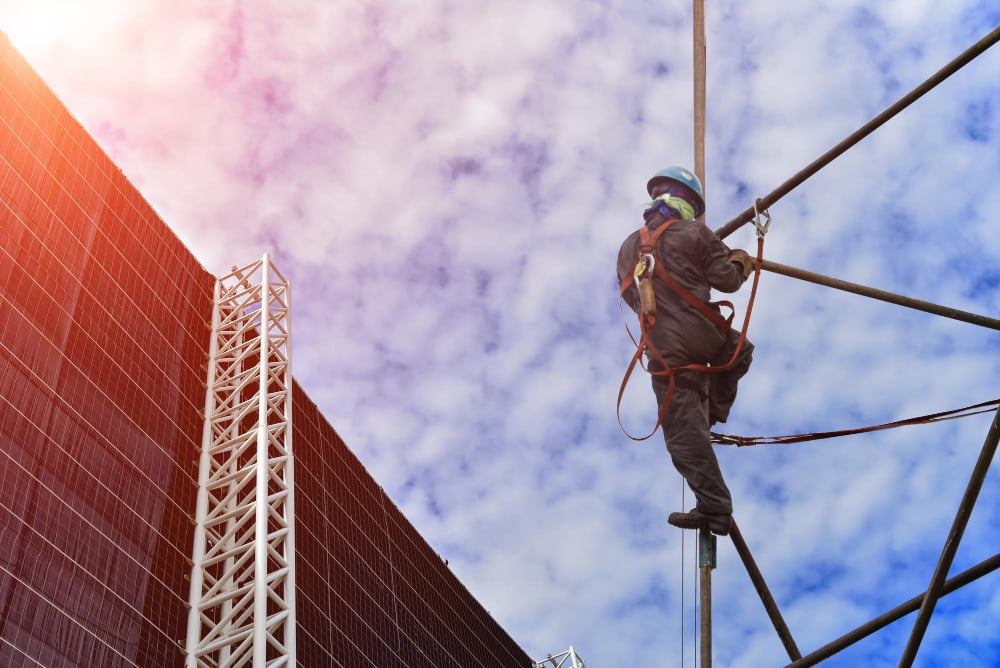
Blog
Working at Heights: Safety Tips for a Dangerous Job

Working at heights is literally as it sounds: when you see construction crews on high level buildings, they’re working at heights. It’s working from anywhere that a fall could be considered debilitating. Thought your office job was stressful? Imagine having to worry about falling every time you take a step.
Anchor Yourself
It’s safe to assume that more things are not an acceptable anchor point than things that are an acceptable anchor point. You can’t go anchoring yourself willy-nilly to anything that seems like it will hold.
The anchor point that you choose should support the weight of the person – of course. But what you might not realize is that it should also be able to support at least 5,000 more pounds than that, in case anything goes south.
That’s a lot of weight to hold, so it’s important to choose your anchor point wisely. If an engineer is on site, which they usually are, seek their approval to determine a proper anchor point.
Raise the Roof
Raising the roof is fun, but falling off or through the roof is not. Before you go into a site, make sure you now the roofing regulations that are in place. Warning lines near fall zones are great, but not always the most effective method of ensuring safety. If a monitor is in place, make sure they have no other duties that can distract them from paying attention to keeping workers safe.
A Thorough PPE Inspection
What’s PPE? Personal protective equipment. This equipment is, essentially, anything that adds to your safety on the job – hard hats, respirators, vests, safety glasses, ear plugs, body suits, harnesses, lanyards – the list continues. Working from heights, these more often include PFAS, or personal fall arrest systems. These should be inspected before every single use to ensure potential hazards or malfunctions are being assessed.
Do You Even Lift
It goes without saying that lifts can present a whole slew of dangers if not used properly. When on a lift, the worker must be properly tied off to ensure their safety. This means that their lanyard should be inspected to make sure it won’t wrap around the rails, and they should be tied to an anchor point that’s been assessed by an engineer. Gates should be closed, and chains should be secured. Both feet should be planted on the platform at all times, with no exceptions.
Climb the Ladder
Working at heights or not, ladders are one of the most common causes of injury for anyone using them. It seems like a simple task, but it’s safer to assume that you don’t know how to use a ladder than to assume that you do. When a ladder has a point that tells you not to step above it, don’t think you know better than a warning – don’t step above it. A fixed ladder always needs a ladder safety gate, and you should maintain three points of contact with the ladder at all times when using it.
Use the Rail
If your mom always used to tell you to hold the rail, then she was a smart lady. When it’s available, always use railing. Thinking you’re too good for a safety measure is basically ensuring that you’re going to hurt yourself. Protective rails are in place for a reason, whether they’re metal roof railing, mounted railing, or another railing system set up by your place of work.
Training is the Name of the Game
The most important safety tip of all is to train as much as possible. F.A.S.T. Rescue offers you a full training course to make sure you stay secure during your entire time on the job. Whether you’re an employer or an employee, it’s absolutely crucial to make sure anyone working at heights knows exactly how to stay safe when they’re working. Working safely only happens from deliberate preparation and education.








